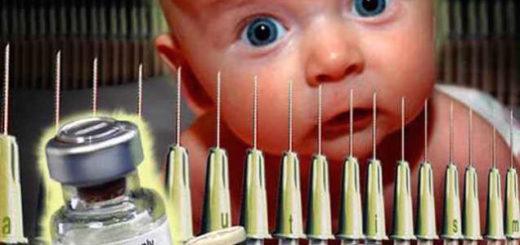Synthetic Pesticides Contributing to (29%) Catastrophic Decline of Birds
Wild Birds Are In Catastrophic Decline
By Nick Engelfried
Whether at backyard feeders, gardens, or in their natural habitat along nature trails, wild birds are a source of joy and fascination to thousands of animal and nature lovers. Because most species fly during the day, and many are brightly colored or have beautiful songs, birds are among the animals most easily noticed by casual observers of the natural world. Unfortunately, the last fifty years have seen a massive decline in bird numbers across North America. From endangered species like sage grouse, to common backyard birds like many sparrows, warblers, and blackbirds, a recent study by the Cornell Lab of Ornithology found precipitous declines across almost all bird families.
Today, the total number of individual birds in North America is estimated to be about 29% fewer than in 1970. This means over the last half century, the continent has lost more than one in four of its birds. Even abundant bird species that are not yet in danger of extinction have seen drastic reductions in their numbers, mostly or entirely because of human activity. We are witnessing a mass bird die-off in North America, and time is running out to reverse the trend.
There are many factors linked to the continent-wide decline in birds, with some much easier to measure than others. Probably the most important is habitat loss; as forests and grasslands are converted to farmland or cities, the number of birds these landscapes can support drops significantly. However, it’s also important to note that not all human-influenced landscapes are equally harmful to birds. Researchers believe, for example, that one major cause of bird declines is the intensification and industrialization of agriculture. As agricultural lands became dominated by large monocrop plantations drenched with pesticides and herbicides, most birds were unable to survive there. On the other hand, less intensive, organic farming practices can result in agriculture and large bird populations co-existing.
Because so many variables are involved, and because it may take years for the decline to be apparent, it’s difficult to estimate exactly how much of the bird die-off is attributable to habitat loss. Easier to quantify are what are known as “direct” causes of bird mortality, where human activity–or that of our machines, structures, or pets–leads to immediate bird deaths that can be observed and tracked in real time. Examples of direct causes include collisions with buildings and vehicles, electrocutions on power lines, and killing of birds by domestic cats.
When it comes to direct causes of mortality, the biggest culprits often turn out to be different from what many people imagine. For example, a lot of press is given to the negative impact of wind turbines on birds. However, as of 2017 the U.S. Fish and Wildlife Service reports that land-based wind turbines killed about 140,000-328,000 birds annually. This sounds like a lot–and it is–but it’s tiny compared to the number of birds killed by other types of human activity. Another energy-related industry, oil, actually kills more birds than wind turbines. The USFWS estimates 500,000-750,000 birds die annually in oil pits.
That said, neither wind energy nor oil comes anywhere near to being the most important direct cause of bird mortality. Collisions with vehicles and glass windows on buildings each kill tens or hundreds of millions of birds yearly. Yet even this pales in comparison to what is by far the largest direct killer of birds: domestic cats. While it’s an uncomfortable truth for many pet owners to hear, outdoor cats kill an astonishing 1.4-3.7 billion birds annually. That’s why, if you have a cat at home, keeping your pet indoors is one of the most important things you can do to save birds and other wildlife. It’s also much safer for your cat. Outdoor cats live on average only two to five years, whereas cats who don’t face the dangers of an outdoor life can easily live well into their second decade.
Other important threats facing birds include pesticides, other forms of environmental pollution, and climate change. Like habitat loss these killers are hugely important but difficult to quantify. Suffice to say that North American birds in the twenty-first century face a barrage of multi-layered threats, with destruction of their habitat, pollution contamination, changes in climate, and direct causes of mortality all combining to make survival very difficult indeed.
So what can be done in the face of today’s ongoing mass bird die-off? Fortunately, there are many ways to increase the odds of survival for birds and reduce negative human impacts. On a large scale these include protecting remaining forests, grasslands, and wetlands; switching to more sustainable agricultural practices; and siting large infrastructure projects away from bird migration routes. On an individual level there are plenty of steps you can take to make your home or garden bird-friendly and provide good habitat. Growing native plants–which attract native insects that many songbirds eat–is a good start, and avoiding the use of synthetic pesticides is also important. If you live in a dry climate where water is scarce, providing a bird bath or other water source can also help wild birds.
Setting up a bird feeder is an easy step for many wildlife enthusiasts to take–and it can be a great idea if approached the right way. Feeders that provide healthy, nutritious food like sunflower and safflower seeds can be genuinely helpful to wild birds. It’s important to keep your feeder clean so it doesn’t contribute to the spread of disease. Finally, installing a feeder will be most beneficial if it is also accompanied by other steps to create bird habitat.
We already have evidence that strategic conservation efforts can help bird populations recover, even lifting some from the brink of extinction. The Cornell study documenting the overall decline of birds found that two groups–waterfowl and birds of prey–have bucked the trend and actually seen their numbers increase since 1970. The recovery of certain waterfowl species like geese and ducks can be attributed to strong efforts to protect wetlands and establish wildlife refuges along crucial migration routes. The adoption of more sustainable hunting practices since the middle of last century has also helped. These successes show that given a chance, declining birds can rebound.
When it comes to birds of prey like hawks, eagles, and falcons, a major cause of their increased numbers is the phasing out of pesticides like DDT. By the 1960s, widespread use of these toxins–which accumulate in the bodies of predatory birds, dangerously weakening their eggshells–led to species like the bald eagle and osprey hovering near extinction. The ban on DDT, combined with habitat conservation, have allowed these magnificent animals to rebuild some of their former numbers. While additional work is still needed to keep them on the path to recovery, today species like the bald eagle once again soar in large numbers over vast swaths of the United States and Canada.
Replicating these success stories with other birds will not be easy. It requires us to rethink the way we grow our food, build infrastructure projects, and design our urban areas. However, with the help of bird enthusiasts and animal lovers across the continent there is reason to believe we can secure a brighter future for hundreds of species in decline. It is up to all of us to make that future a reality.
Photo credit: Famhud















